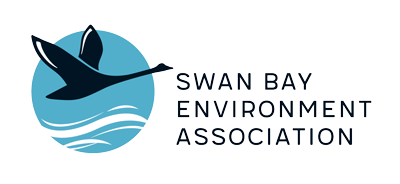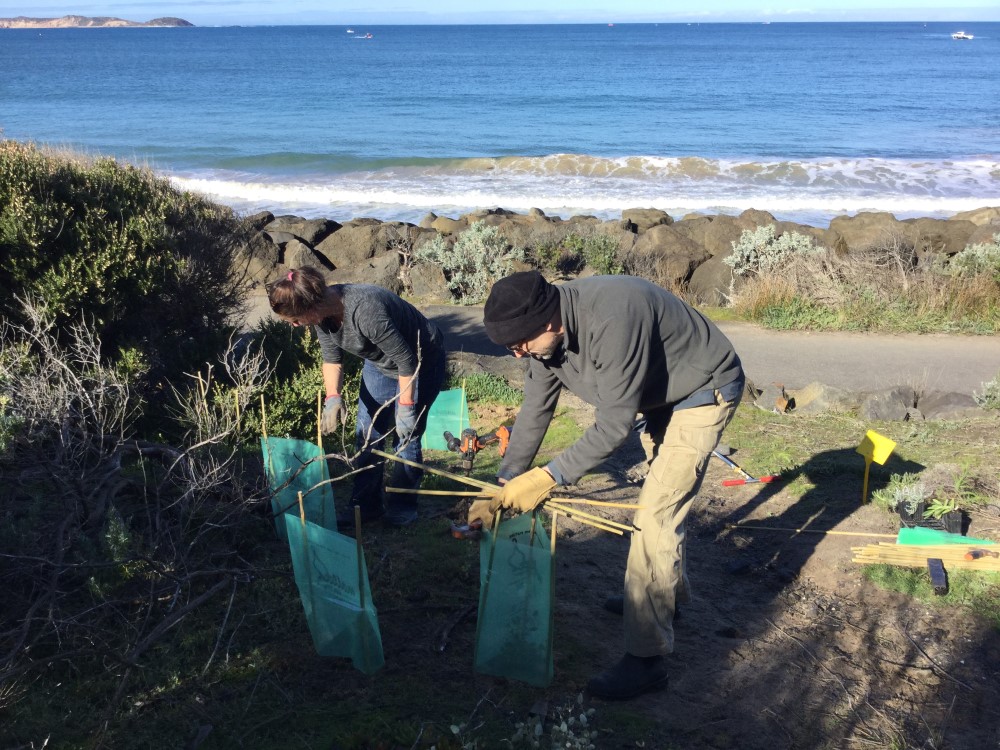
The Narrows Community Planting Day
The Narrows is that sandy strip of land that connects Queenscliff with Point Lonsdale. For more than 10 years, volunteers with the Bellarine Catchment Network have weeded and planted along there as part of the annual Narrows Community Planting Day.
In 2019 our Queenscliffe Indigenous Nursery provided 400 plants for the day. The plants included the Hedge Wattle, Coast Wirilda, Dune Thistle and White Correa.
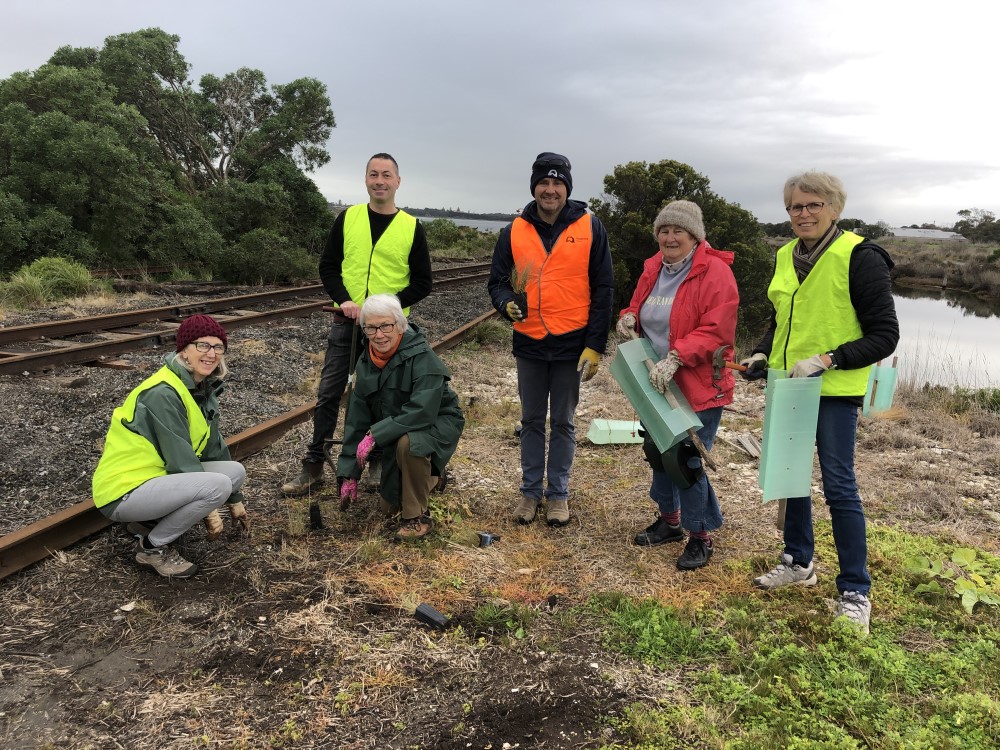
Bellarine Rail Trail and Fellows Road
The 35-kilometre Bellarine Rail Trail follows the old railway line between South Geelong and Queenscliff. It passes through a landscape that has less than five per cent of its original vegetation left. Restoring some of that vegetation is an important aim of the Bellarine Catchment Network and the Swan Bay Environment Association.
Volunteers and Bellarine Catchment Network staff have been planting tubestock from the Queenscliffe Indigenous Nursery near the trail’s intersection with Fellows Road. Coastal moonah woodland and coastal saltmarsh plants such as Marsh Saltbush, Coast Spear-grass, Rounded Noon-flower, Austral Sea-blite and Coast Bonefruit are some of the plants used.
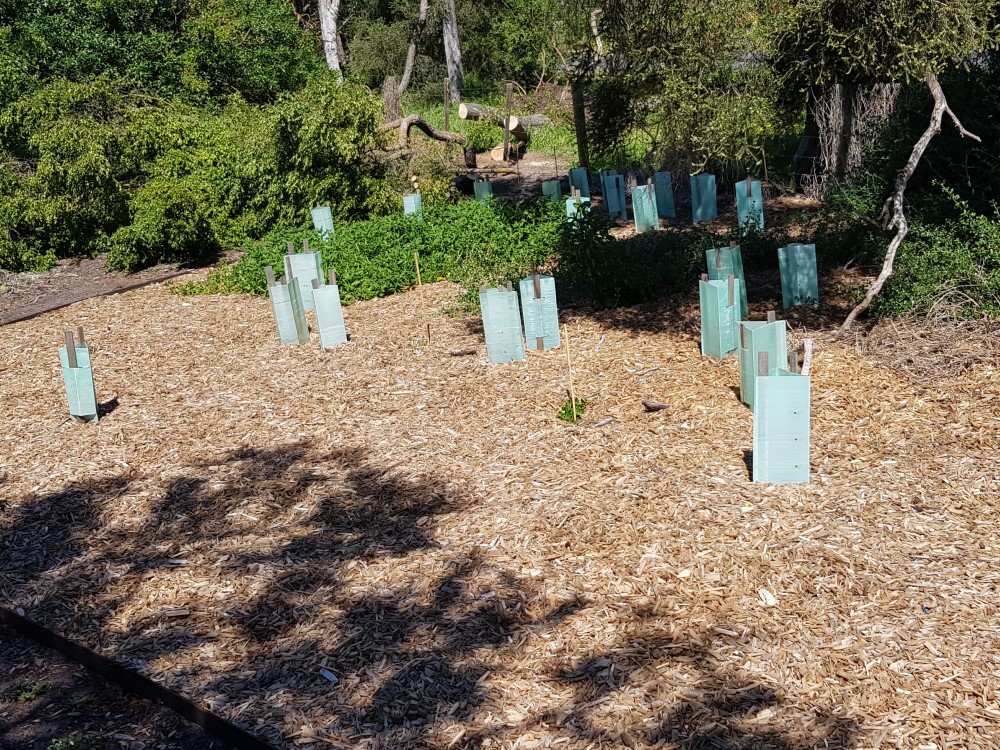
Queenscliff Cemetery
Polygala, African Box-thorn and Italian Buckthorn were some of the weeds targeted by volunteers restoring moonah woodland at the Queenscliff Cemetery. The project partnered the Bellarine Catchment Network with the Borough of Queenscliffe and the Geelong Cemeteries Trust.
Coast Pomaderris, Hop Bush, Common Beard-heath, Wallaby Grass, Yellow Rush Lily and Moonah were some of the plants supplied for the project by the Queenscliffe Indigenous Nursery.
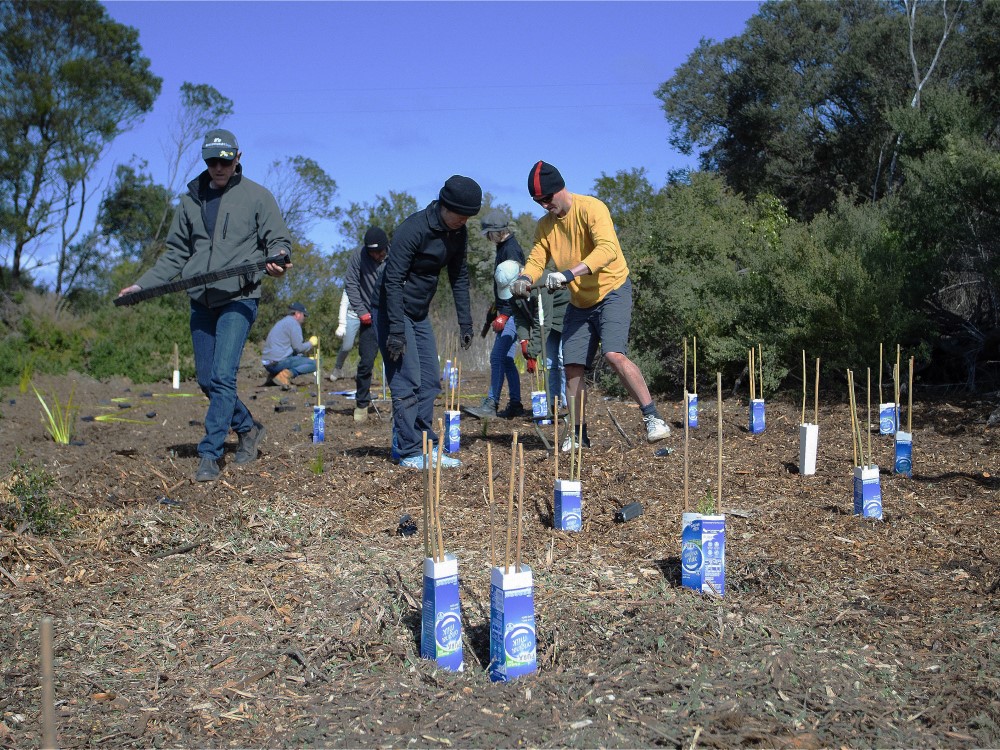
The Point
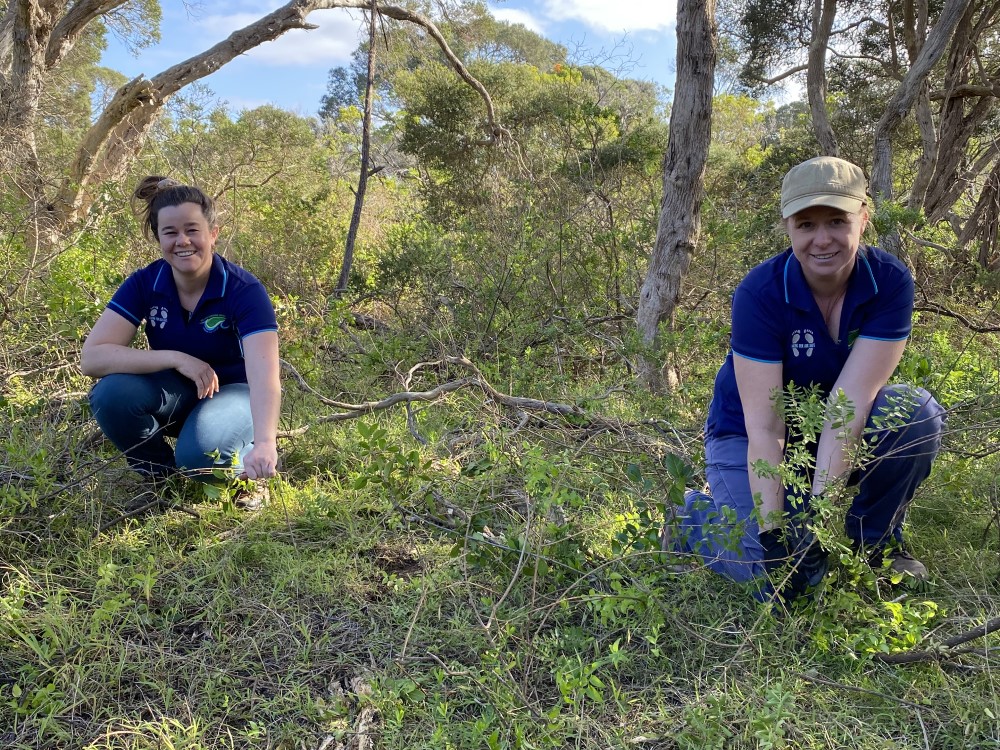
Weeding out fuel loads
Polygala is also known as the Bellarine Pea or Myrtle-leaf Milkwort. It has infested large areas along The Narrows between Queenscliff and Point Lonsdale. As well as pushing aside native plants and reducing food sources for local wildlife, the plant is highly flammable and adds to local fuel loads. That puts the local flora and fauna, infrastructure and nearby houses at risk should a fire ignite.
In a joint project between the Bellarine Catchment Network, the Country Fire Authority and the Borough of Queenscliffe, large volumes of the weed have been removed to help restoration of the coastal moonah woodland and to reduce the risk of bushfire. Coast Twinleaf, Black-anther Flax-lily, Sweet Bursaria, Small-leaved Clematis and Moonah are some of the plants supplied by the Queenscliffe Indigenous Nursery.
Nankervis Parade
For many years the cliff overlooking Swan Bay along Nankervis Parade was used as a rubbish dump and the native vegetation became degraded and infested with weeds. More recently it has been the site of a revegetation project and the view is changing (see photos).
Boobialla, Coast Pomaderris, Bower Spinach and Drooping Sheoak are some of the Queenscliffe Indigenous Nursery plants now growing there.
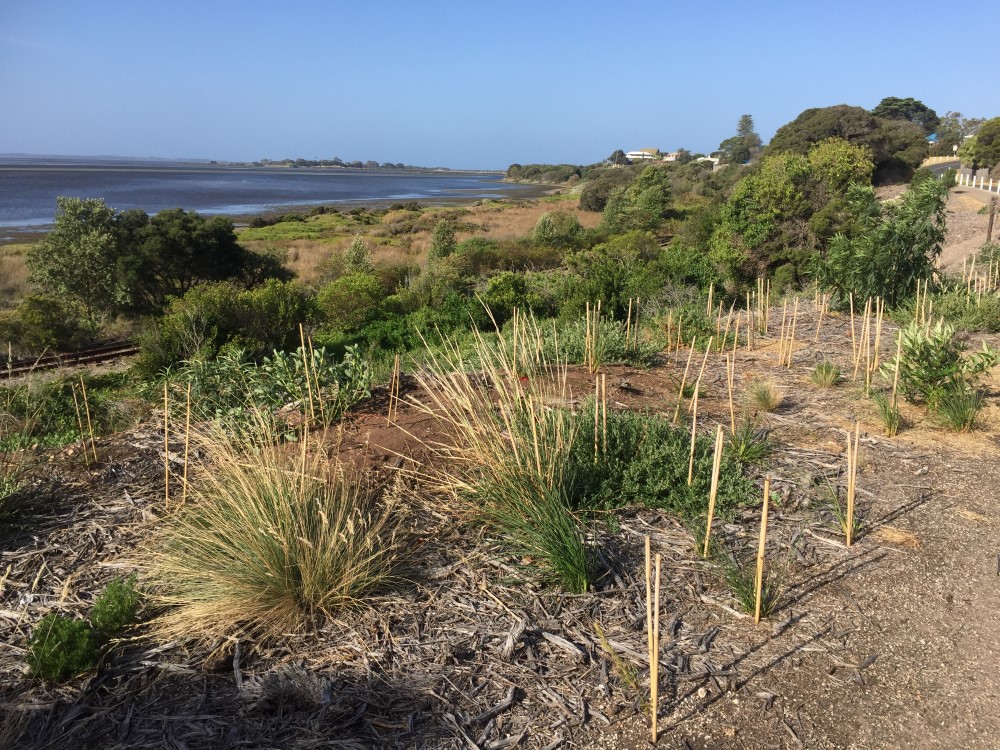
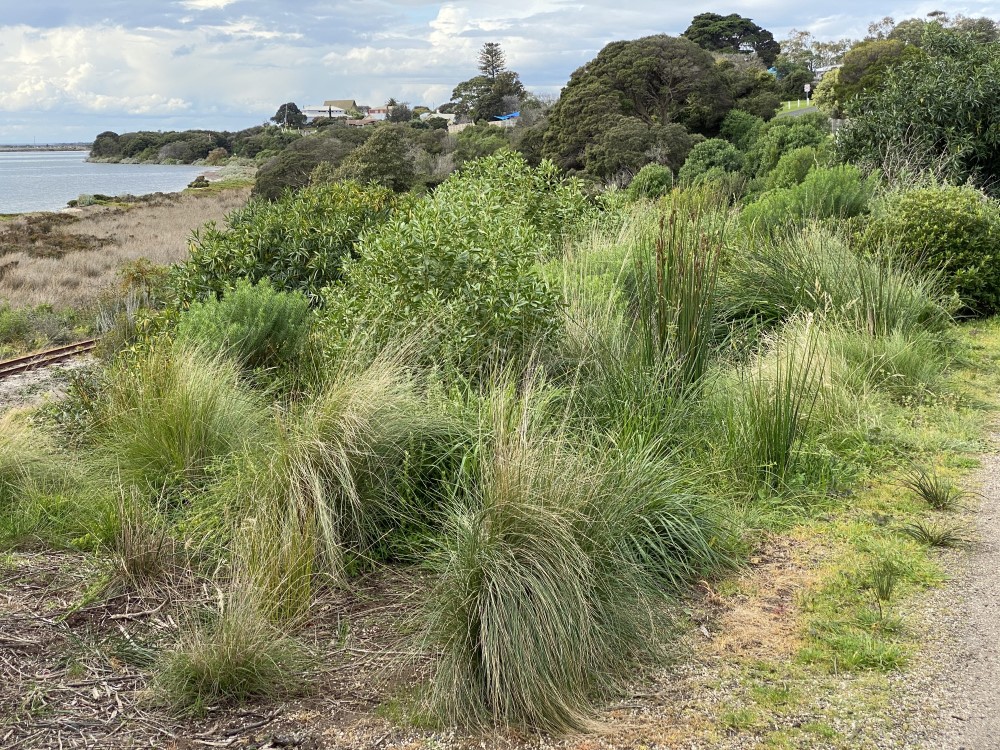
If you wish to purchase any of the plants mentioned in these projects, click here.
For more information about the Bellarine Catchment Network and its diverse work, go to www.environmentbellarine.org.au
The Swan Bay Environment Association is delighted to be working in partnership with the Bellarine Catchment Network in its restoration projects on the Bellarine Peninsula.
